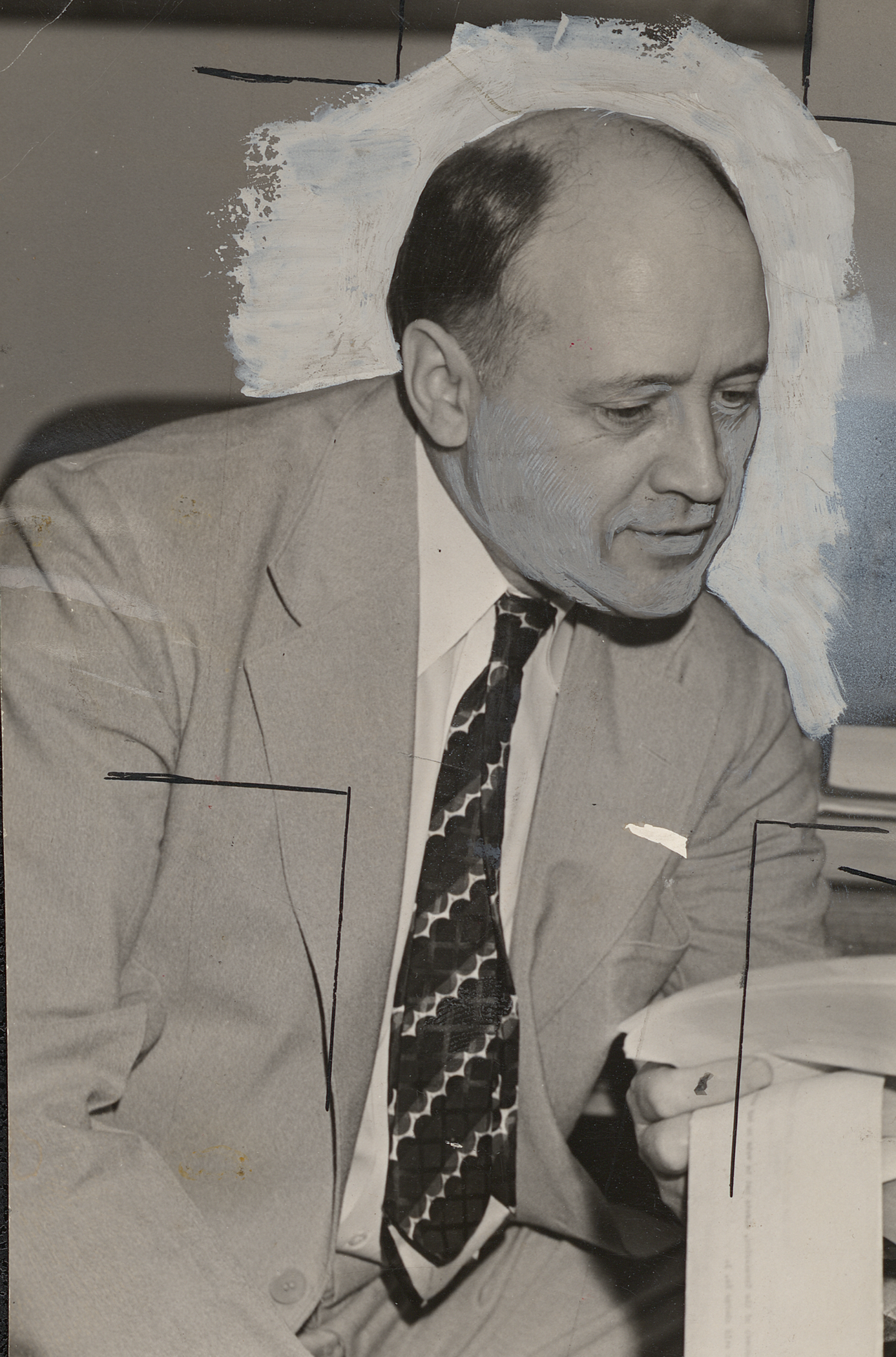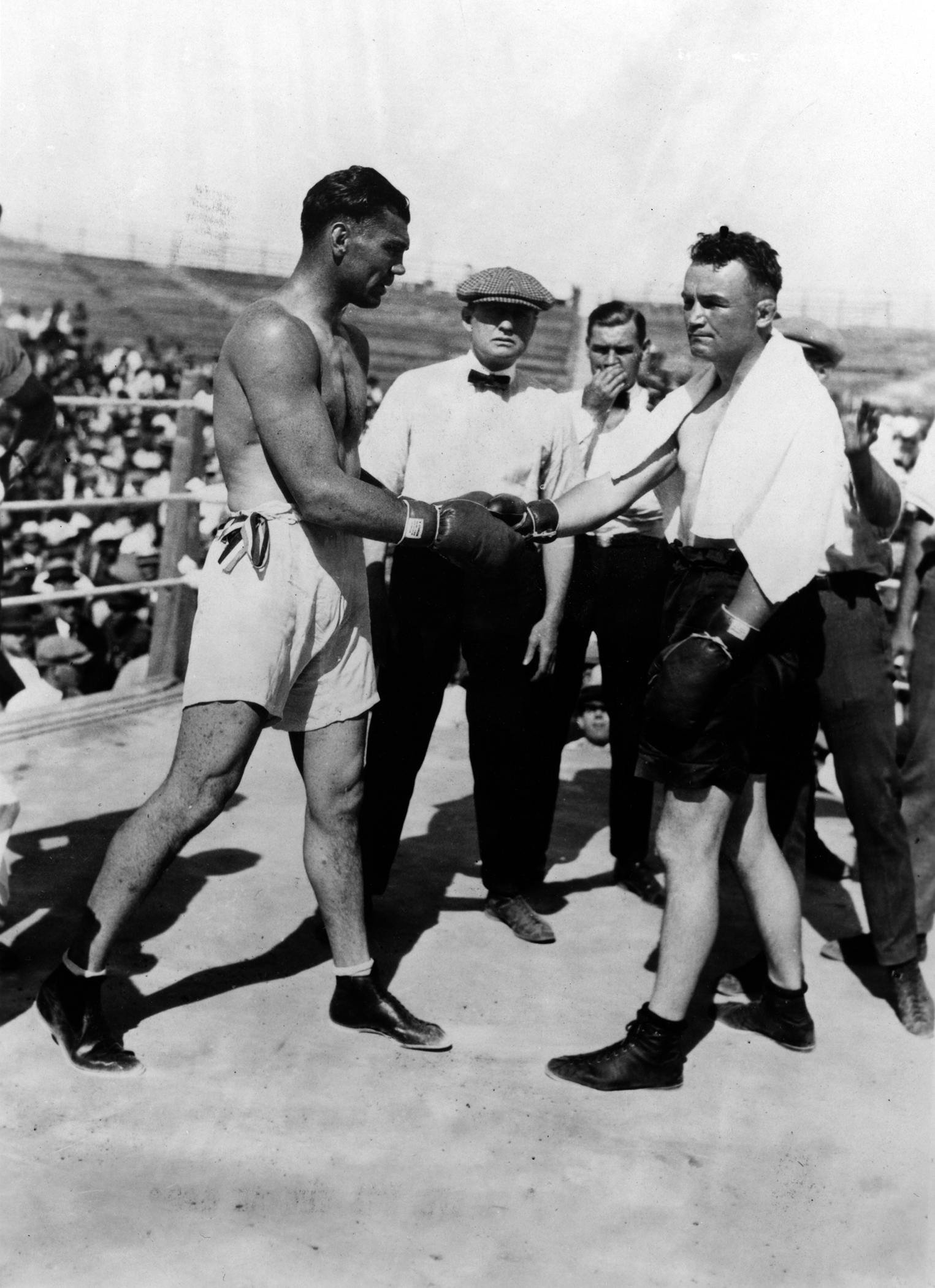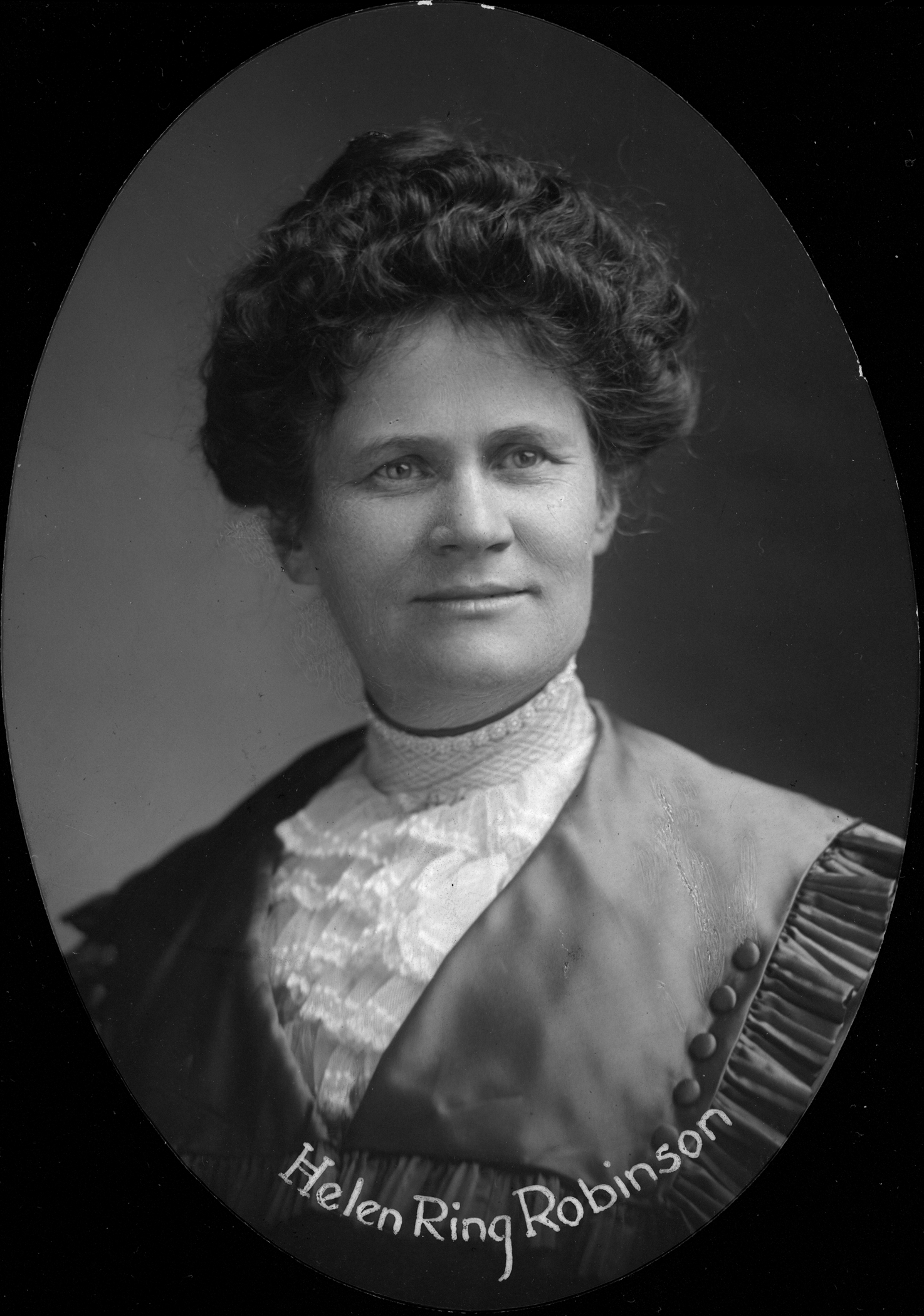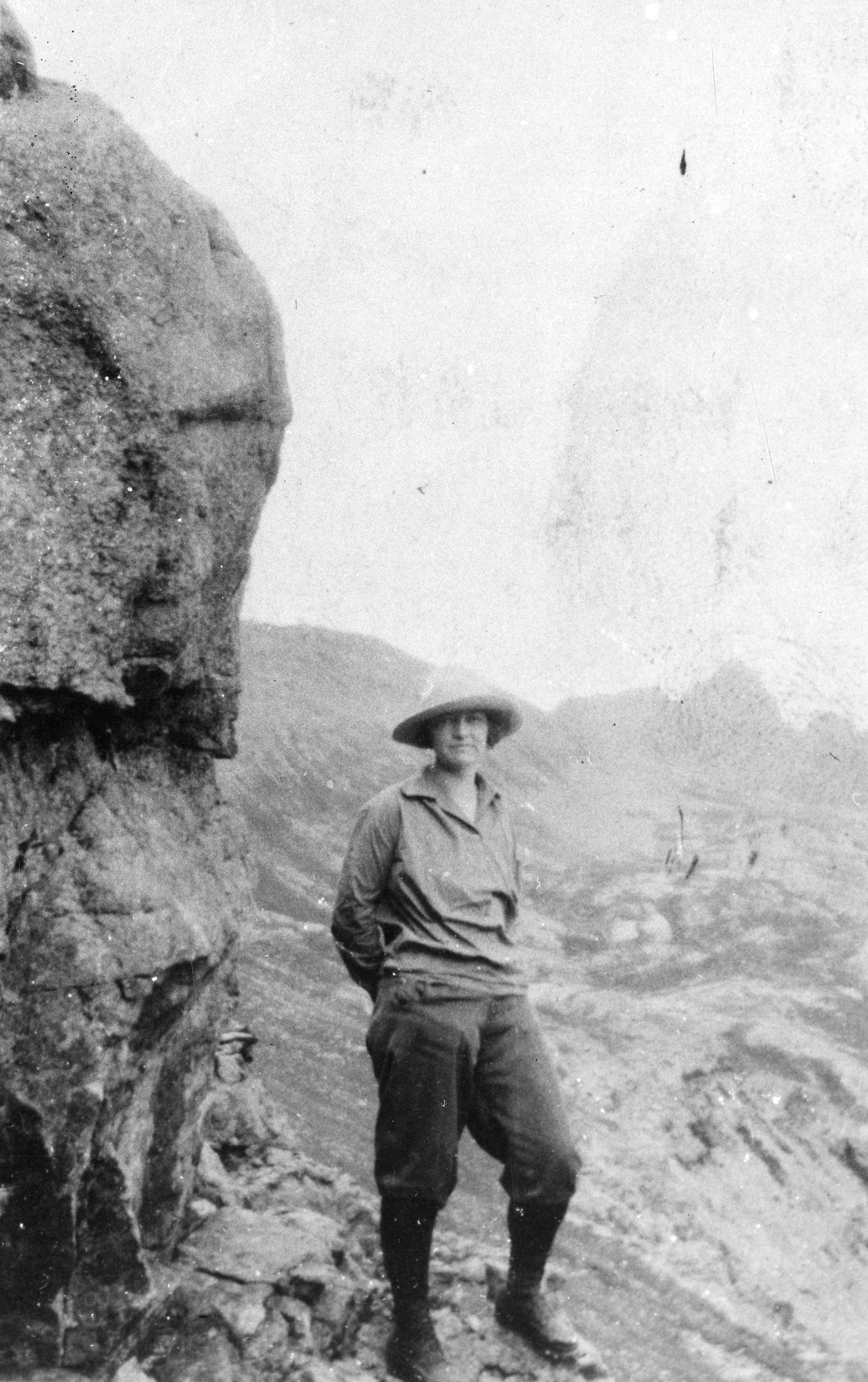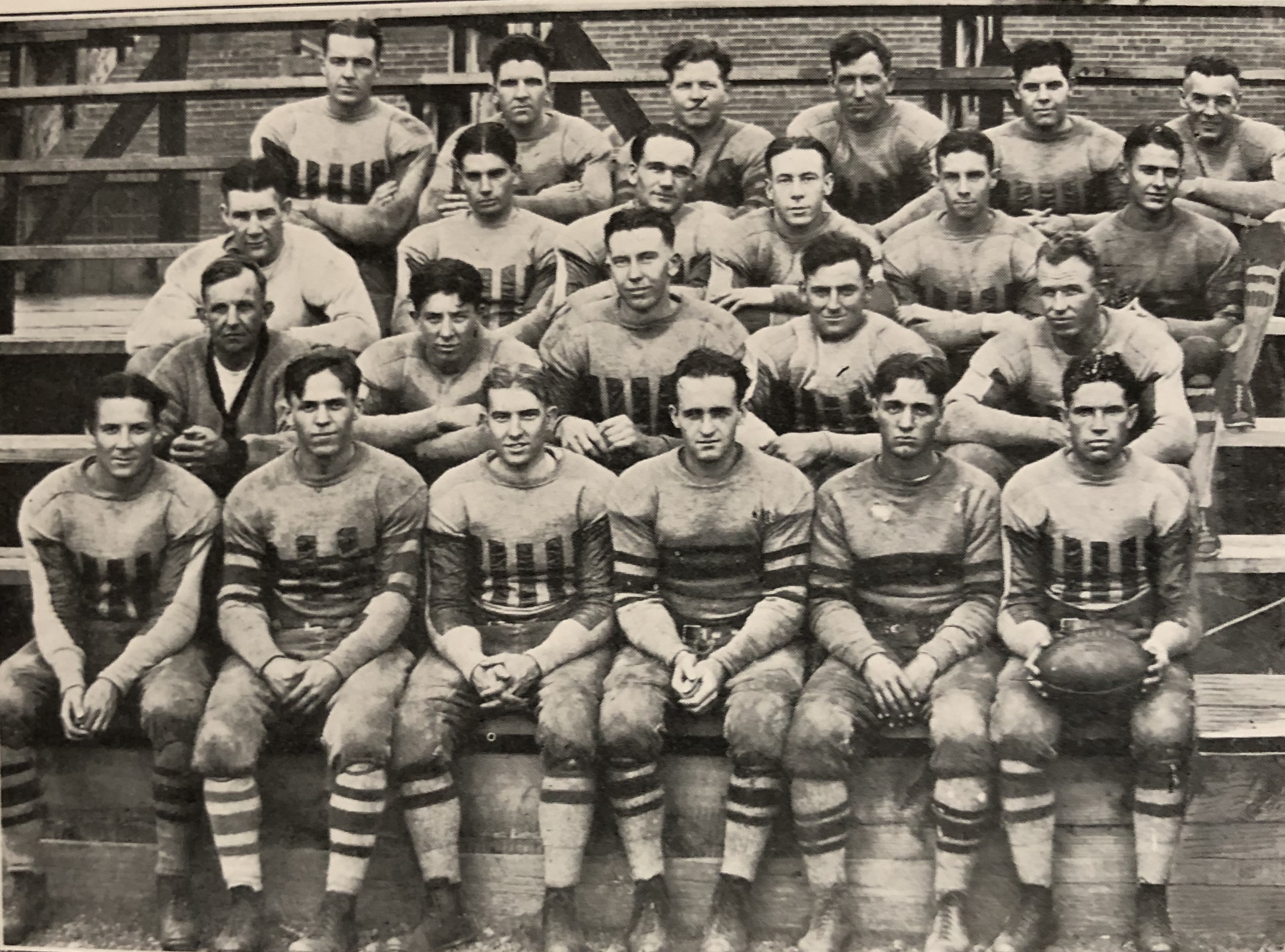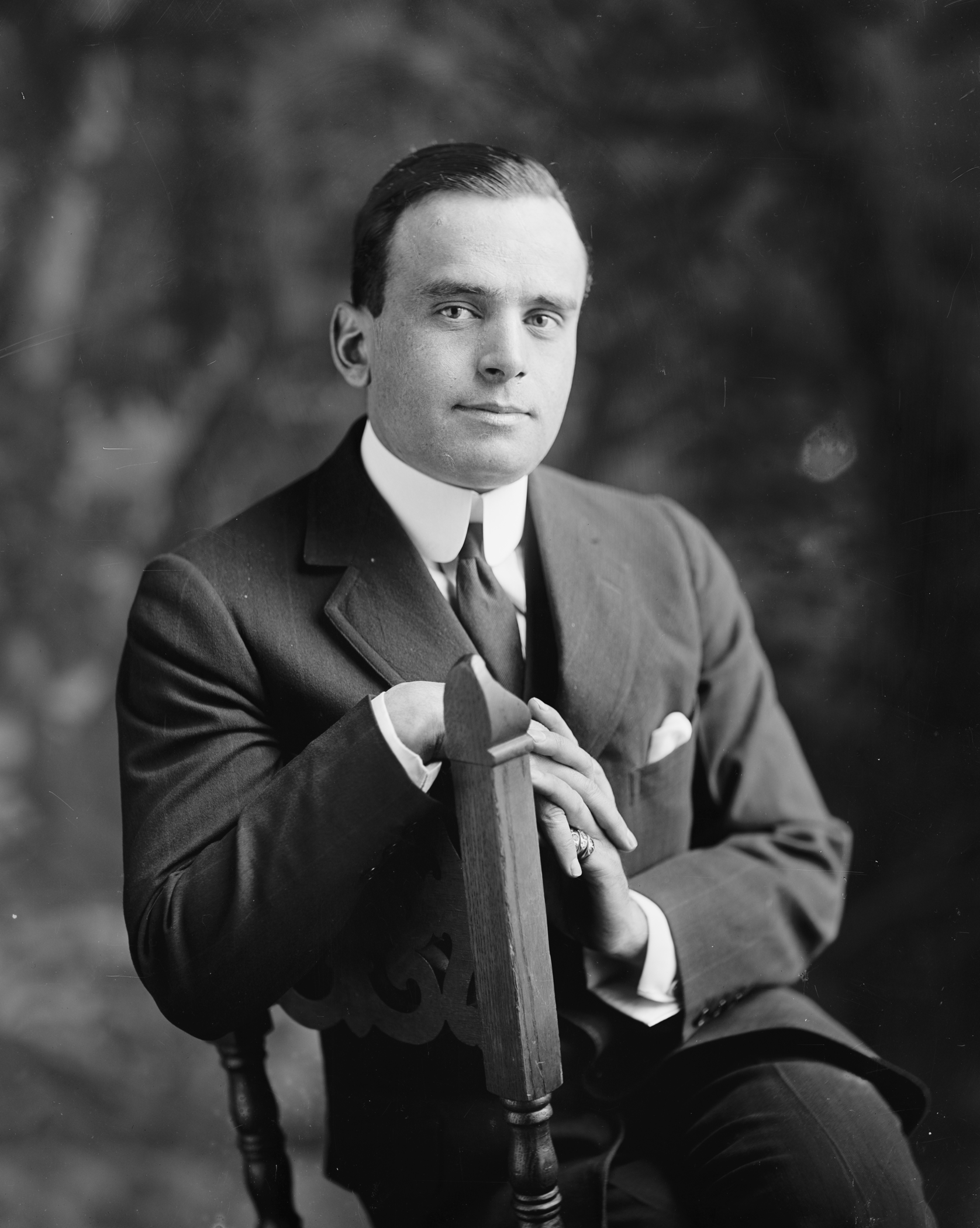
Story
1923
Twenty-three events that shaped the year we launched The Colorado Magazine.
A century ago, The Colorado Magazine debuted as the historical publication of record for a state that was preparing to celebrate its “Golden Jubilee.” Colorado had been part of the Union for nearly five decades, and its residents had called themselves Coloradans (or Coloradoans) for only a couple of decades longer than that, if they identified with the term at all. The state’s population was still just shy of one million residents. The average Colorado household earned $2,771 per year, which was $455 lower than the national average, according to tax return data. Automobiles and telephones were still luxuries throughout most of the state.
As the editors prepared the first issue of this magazine in 1923, the events of recent years were still casting a long shadow across Colorado. Five years past the armistice that quieted World War I’s guns, the war’s impacts were still being felt globally. Families were grieving not only those killed in the war but the losses of the 1918 influenza epidemic that killed nearly 8,000 Coloradans and 675,000 Americans (and as many as 21 million worldwide) in just a few months at war’s end. Labor unrest roiled the country, including a violent Denver Tramway workers strike in 1920, as workers fought for fair wages and eight-hour days. Others saw in the era’s labor activism a Red Scare colored by Bolshevik victories in Russia and Hungary, and the US Department of Justice had arrested thousands of suspected political dissidents in 1919 and 1920. The everyday violence of white supremacy erupted into race riots in cities throughout the country, from Chicago to Washington, DC, and most egregiously in Tulsa when in 1921 white residents destroyed the prosperous Black community of Greenwood and killed more than 300 of its residents.
Throughout the nation, the passage of the Nineteenth Amendment in 1920 secured the right to vote for women, a right that Colorado women had enjoyed since 1893. Prohibition also settled its dry blanket over the nation in 1920, making it hard—but hardly impossible—to get a drink. Again, Colorado had led the nation, going dry in 1916. Colorado’s economy, however, was slow to follow the nation into the Roaring ’20s, slumping into recession as the high agricultural and mining prices spurred by World War I receded. The Ku Klux Klan was advancing throughout the state, feeding on economic unrest, anxiety about immigration, and racism. Hemlines were rising as women claimed new roles in postwar society and embraced flapper fashion. The Jazz Age was dawning, and as music fans throughout the nation discovered Bessie Smith and Louis Armstrong, Coloradans were tapping their feet to the rhythms of George Morrison and his Jazz Orchestra in venues like the Colony Ballroom and Baxter Hotel (later renamed the Rossonian) in Denver’s Five Points neighborhood. New technologies like automobiles, airplanes, and radios were collapsing the distance between people and remaking modern life.
It was a volatile period, crowded with events that would shape the century ahead. Readers today might feel a kinship with our predecessors in 1923, striving to keep up with the disorienting pace of events and maintain a sense of historical perspective that might help them understand how they had arrived at that moment. Here are some of the main stories Coloradans were reading about—and increasingly listening to radio reports on—as the inaugural issue of The Colorado Magazine was being published.
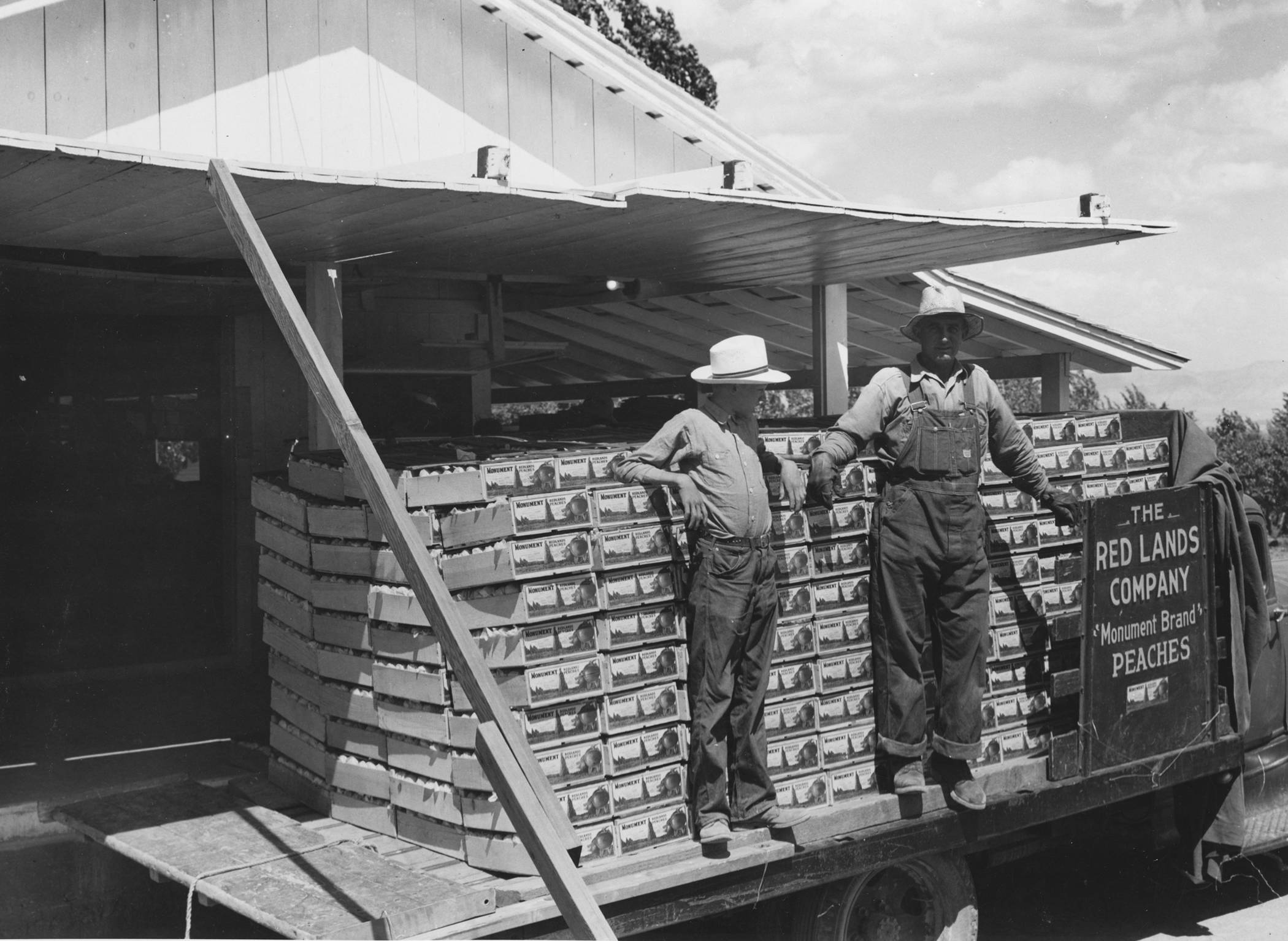
Organizing labor helps Colorado’s agricultural industry feed the people and the economy, 1920–1940.
1. Slow to Roar
As the nation’s stock market raced upward during the Roaring ’20s, Colorado’s economy was slow to join the party. The state’s farmers and miners had enjoyed high prices during World War I as the war impacted their European counterparts, but as that demand subsided after the war a severe recession settled onto two of the state’s major economic sectors. On the Western Slope, fruit growers sought to stem the downturn by organizing a cooperative, forming the United Fruit Growers Association to market their produce.
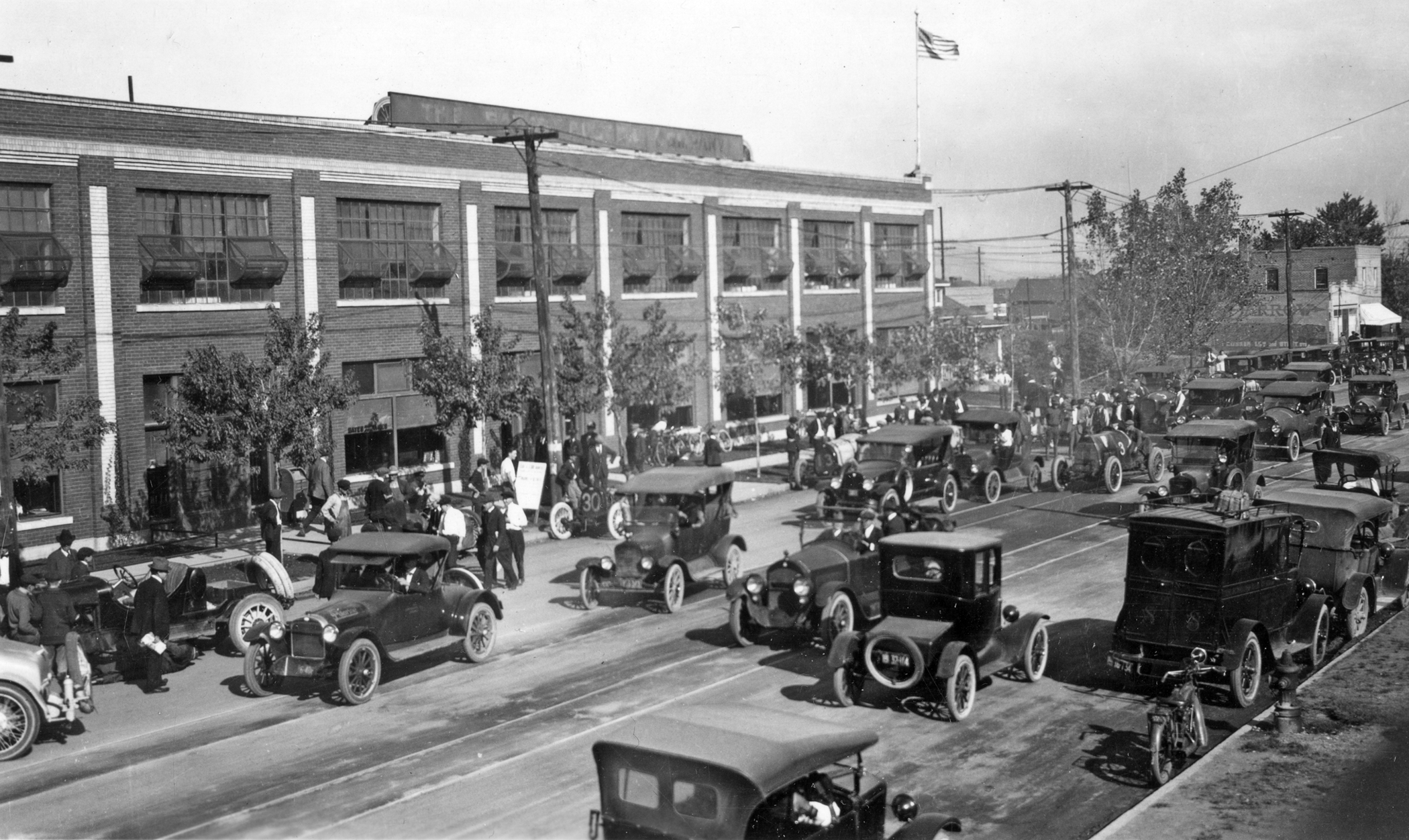
Drivers navigate Denver traffic in the early 1920s outside of the Gates Rubber Company on South Broadway.
2. Driving Ahead
A 1923 Ford could be purchased for as little as $225, although prices went up to $590 if you wanted more than two seats or features like doors and roofs. Automobiles were rapidly becoming part of daily life in Colorado: Coloradans registered nearly 190,000 cars and trucks in 1923. Thanks to a price war among the nation’s oil producers, drivers throughout most of the state could fill up their gas tanks for between 14 and 18 cents per gallon.
3. A New National Monument
Proclaiming it “the finest prehistoric masonry in the United States,” in March President Warren G. Harding established Hovenweep National Monument along the border of southwestern Colorado and Utah to protect the region’s Ancestral Puebloan structures.
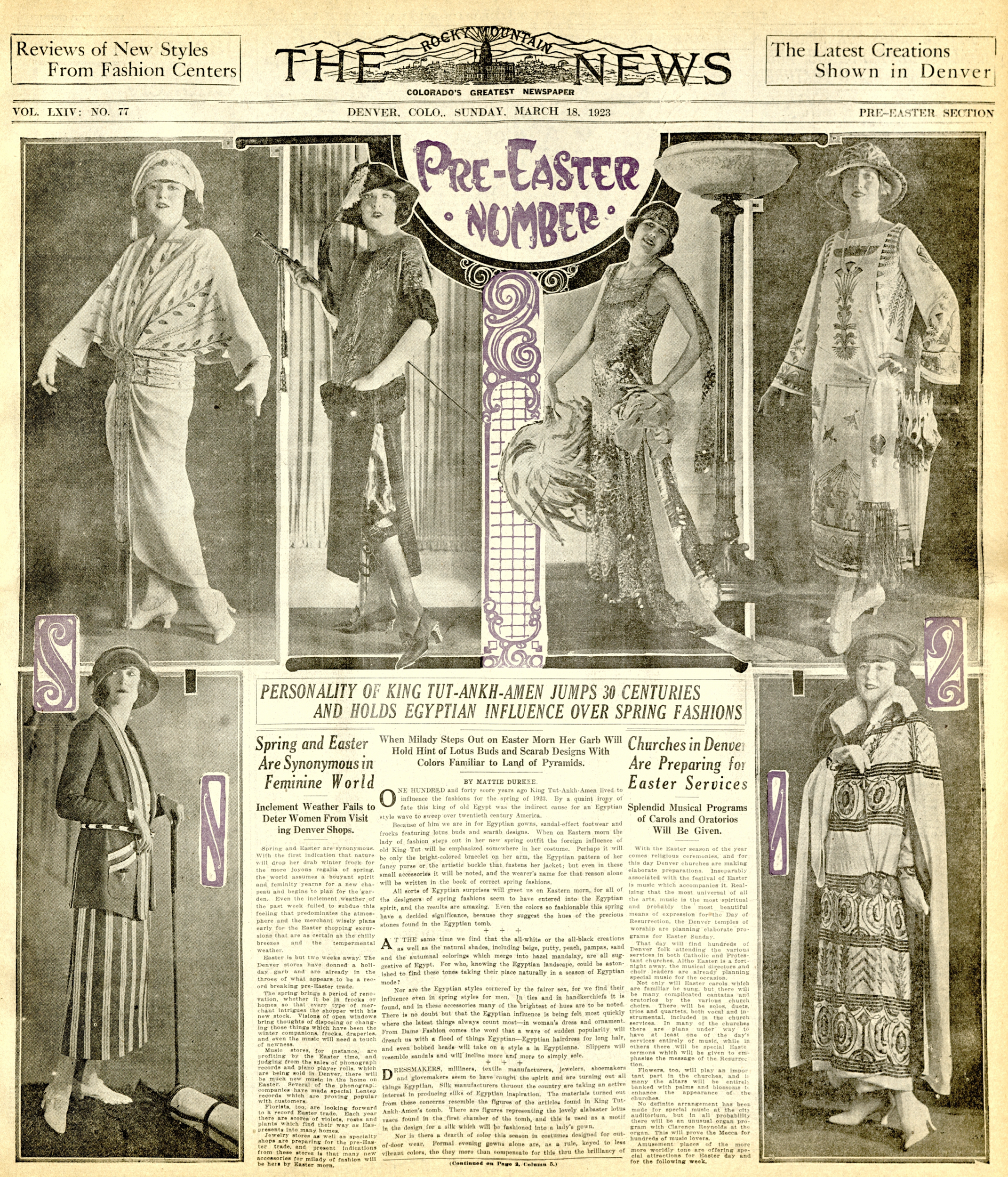
Archaeology-inspired fashion was all the rage, even making the front page of The Rocky Mountain News, March 18, 1923.
4. Opening King Tut’s Tomb
British Archaeologist Howard Carter captured imaginations worldwide when he led an exhibition that uncovered the entrance of Egyptian Pharaoh Tutankhamun’s tomb in the Valley of the Kings on the west bank of the Nile in November 1922. By February 1923 he was able to open the door to the burial chamber. The riches within inspired a fascination with Egyptian history and culture that strongly influenced art, design, and fashion—including iconic flapper dresses—throughout the decade.
5. Prohibition Turns Violent
Colorado had been dry since 1916, and bootleggers had been vying to sell Coloradans their next drink for just as long. In 1923, that competition erupted into an intense period of violence in southern Colorado as the Danna and Carlino families battled for control of the illicit liquor trade throughout the state. In a series of assassinations, the Danna family murdered four members of the Carlino operation in and around Pueblo between February and September. The Carlinos would retaliate, and the gang war would continue through the decade.
6. “Million-Dollar Bunco Ring”
Bootleggers weren’t the only organized criminals operating in Colorado. In February, Denver District Attorney Philip Van Cise put Lou Blonger and his associates in the “Million-Dollar Bunco Ring” on trial. For more than two decades, Blonger had led a gang of con artists that targeted tourists while the city’s police, journalists, and political leaders looked the other way. Van Cise refused Blonger’s payoffs and raided the operation, securing a guilty verdict at the end of March for twenty of the cons, including Blonger.
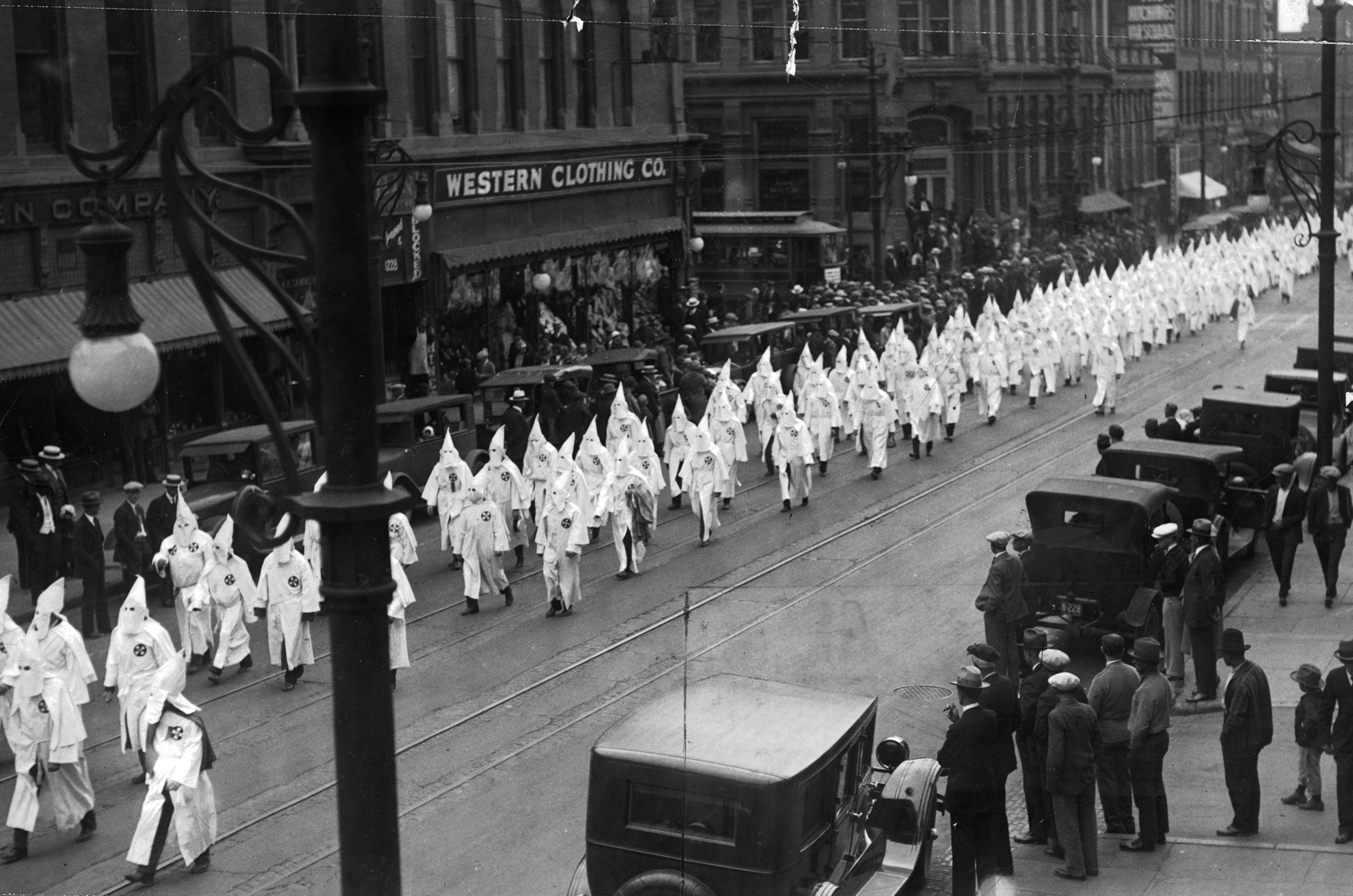
Members of the Klu Klux Klan march down 17th Street in Denver in 1926.
7. The Klan Flexes Its Power
The corruption in city government exposed by the Blonger trial put Denver voters in the mood for new leadership, and in an election that used a ranked-choice ballot, city postmaster Benjamin Stapleton was elected mayor in May. Despite assertions of his independence, Stapleton was backed by the Ku Klux Klan, which had grown rapidly in Colorado by fusing law-and-order rhetoric with discrimination against non-white, Catholic, and Jewish Coloradans. In Denver, surviving membership ledgers suggest that between 20 and 30 percent of the city’s white men belonged to the white supremacist group during Stapleton’s first term, and the mayor offered his support while stocking his administration with Klansmen.
8. Lenin Ailing in Russia
News from Russia reminded Coloradans that the aftershocks of World War I were still reshaping the global geopolitical landscape. Vladimir Lenin, the architect of the Bolshevik Revolution in Russia during World War I, was forced to retire from public life in March due to failing health. As potential successors maneuvered to take his place, Lenin attempted to prevent Joseph Stalin from seizing control over the party he had founded. When Lenin died at the start of the following year, however, Stalin quickly consolidated power over Russia’s communist party.
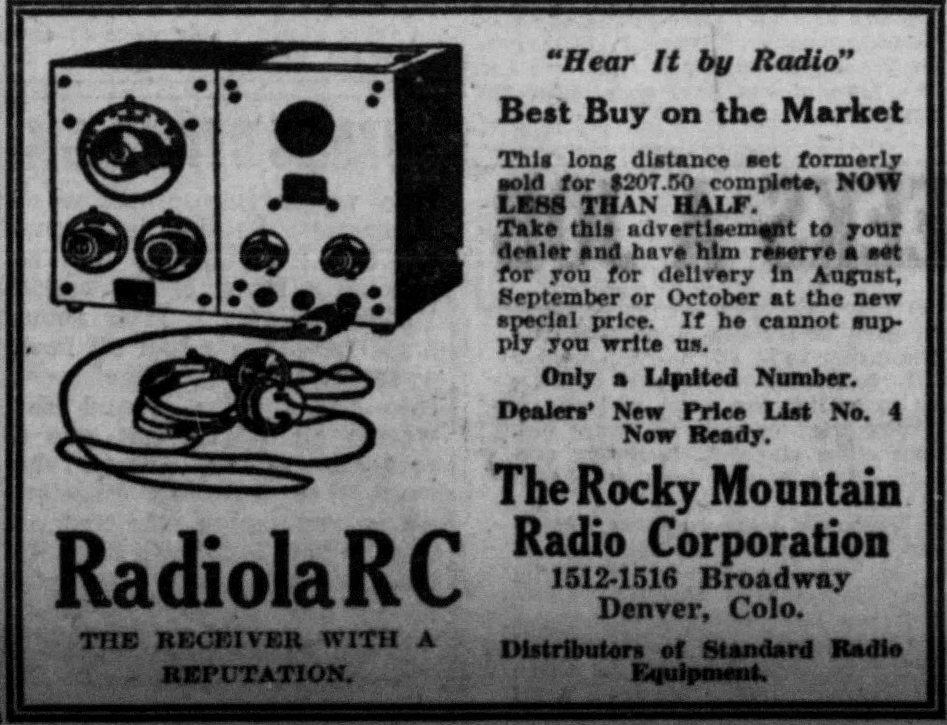
A radio advertisement from The Great Divide newspaper on August 22, 1923.
9. “That New Marvel…the Radio-Phone”
Coloradans were increasingly getting their news from a new source: the radio. After the first commercial radio stations were launched in 1920, Americans quickly incorporated the new technology into their daily lives. Around 10 percent of Americans had radios in their homes in 1923, and connected Coloradans could tune in to only a few local stations. Nonetheless, the possibilities were so apparent and tantalizing that the Rocky Mountain News proclaimed on October 28, 1923, “Radio to Run the World in the Near Future.” Even the editors of this magazine joined in the chorus of amazement, wondering how the radio would go down in history: “Who will write the first chapter of that new marvel, at the mention of which we still hold our breath in wonder—the radio-phone?” editor Elmer A. Kenyon mused in the July 1924 issue of The Colorado Magazine. By the end of the decade, radios had become such a fixture in American life that the US Census Bureau asked about them, finding that more than 100,000 Colorado households (about 38 percent of the population) were tuning in around their radios at home.
10. The Manassa Mauler Retains His Crown
In the boxing ring, Jack Dempsey, the popular “Manassa Mauler” from Colorado, retained his heavyweight crown following a fight against Tommy Gibbons in a disastrous publicity stunt arranged by the small town of Shelby, Montana on July 4. Two months later in New York City, in a bout that observers hailed as an instant classic, a significantly larger crowd watched—and listened—as Dempsey was knocked out of the ring by Argentinian fighter Luis Ángel Firpo but fought his way back to a second-round knockout to defend his heavyweight title. Colorado boxing fans from Lafayette to Colbran gathered around radios for a ringside seat to the action.
11. Saying Farewell to a Bold Woman
In July, hundreds of mourners came to pay respects to Helen Ring Robinson as she lay in state in the Colorado State Capitol rotunda. In 1912, Robinson was the first woman elected to the Colorado State Senate. She had been an advocate for women’s rights and equality in Colorado and for women’s suffrage nationally, and was a voice for peace in the years before World War I.
12. Women With Altitude
As Robinson lay in state, Colorado Mountain Club members Mary Cronin and Agnes Vaille embarked on an epic season of climbing, with Cronin summiting at least fifteen Fourteeners and Vaille notching at least seventeen during the year. Within a decade, Cronin would go on to become the first woman to climb all of Colorado’s Fourteeners.
13. The President Dies in Office
Weakened by illness and exhausted by his long tour of the West throughout the summer, President Warren G. Harding died in San Francisco on August 2. Vice President Calvin Coolidge was sworn in as president as Harding’s body was carried back to Washington, DC on a special funeral train. As it moved across the country, Coloradans joined Americans across the nation in expressing their grief at the president’s sudden passing.
14. Implementing the Law of the River
In the first year of the Colorado River Compact managing the use of the Southwest’s greatest river, August saw a government survey party begin descending the river with an eye toward locating potential dam sites in the Grand Canyon. When a sudden surge of water swamped their boats, the nation anxiously awaited news of their rescue. Meanwhile, Colorado water managers also looked east, reaching an agreement with Nebraska to define each states’ rights to the waters of the South Platte River.
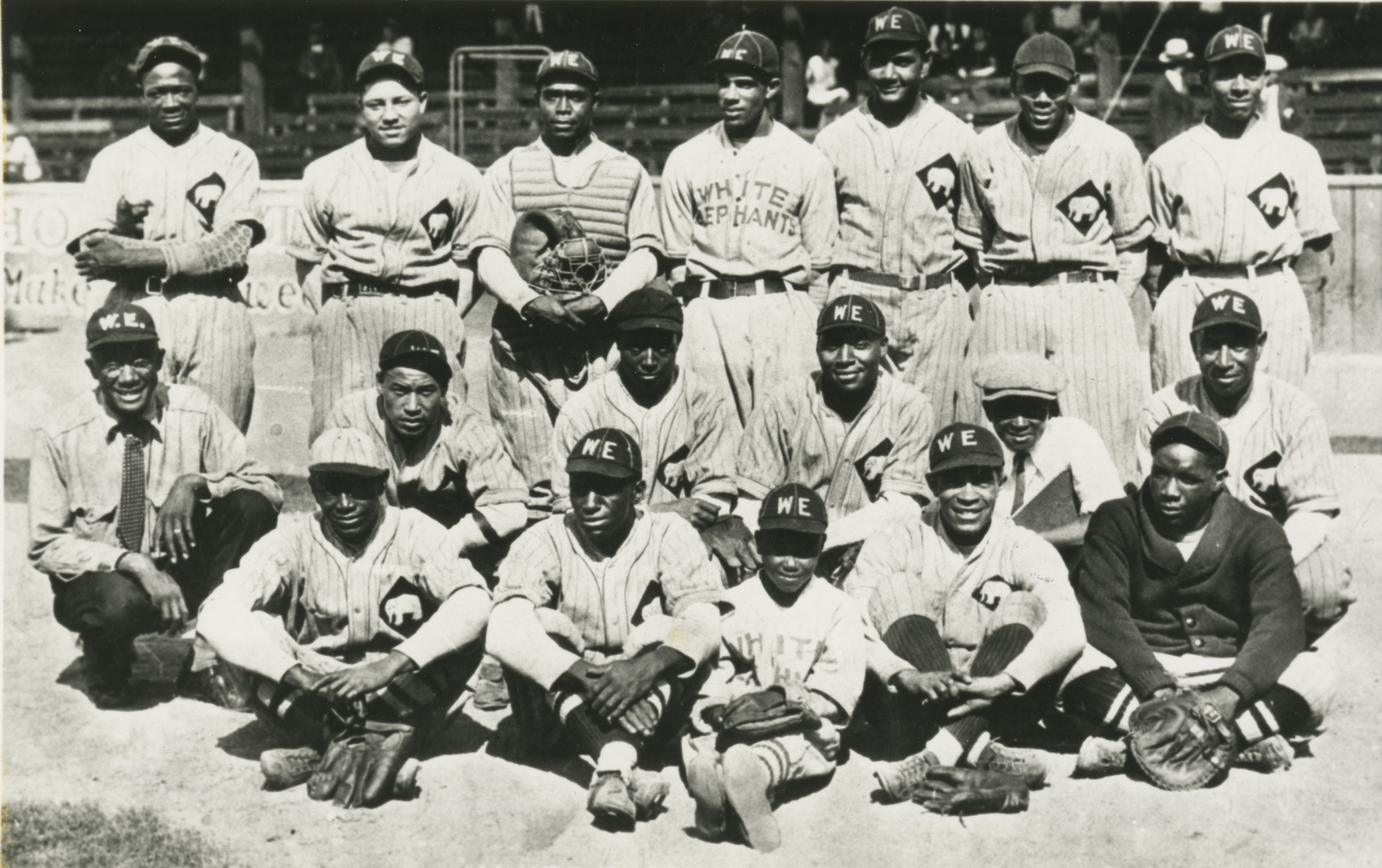
The Denver White Elephants were an all-Black baseball team that earned a reputation as one of the best squads in Colorado throughout the 1920s and ’30s.
15. At the Old Ball Game
In newly opened Yankee Stadium, Babe Ruth was the biggest attraction in the sporting world throughout the summer. With a personality as big as his home runs, he helped baseball win back fans after the Black Sox Scandal found eight members of the Chicago White Sox had conspired to rig the 1919 World Series for gamblers. In October, Ruth’s New York Yankees beat the New York Giants in the World Series. In the Negro Leagues, the Kansas City Monarchs won the Negro National League crown and the Hilldale Club won the Eastern Colored League. The two teams would meet the following year in the first Negro League World Series. In Colorado, communities from Olathe to Trinidad and Greeley to Grand Junction cheered on local teams, and in August the best semipro squads in the country dazzled fans at the Denver Post Tournament, which showcased the highest-level baseball most Coloradans got to see live each season.
16. Redrawn Maps and New Political Orders
In the aftermath of World War I, the victorious Allies redrew portions of the map that had once been dominated by the extensive Ottoman and Austro-Hungarian Empires, assuming control for themselves over some places while supporting new self-governing nations in others. At the end of September, the Council of the League of Nations’s Mandate for Palestine went into effect, charging the British government with ruling over the region and creating a homeland for Jewish people within it. The next month, the Republic of Turkey declared its independence.
17. The Teapot Dome Scandal
In October, a senate committee began its public inquiry into the Teapot Dome Scandal. Secretary of the Interior Albert Fall, who had resigned from Harding’s cabinet at the start of the year, was accused of improperly leasing federal oil reserves to private companies. The investigation ultimately found evidence that Fall had accepted bribes in exchange for the leases. He was sentenced to a year in prison—the first time a cabinet member was imprisoned for conduct while in office.
18. On the Gridiron
On the gridiron, the Colorado Silver and Gold football team at the University of Colorado in Boulder battled the Colorado Agricultural Aggies (now CSU), the Colorado College Tigers, the Denver Pioneers, and the Colorado School of Mines Orediggers (as well as rivals from Utah, Wyoming, and Montana) to win the Rocky Mountain Conference title. The New York Times reported that eighteen players around the nation died of injuries sustained on the field, including Buell Crawford of Western State College.
19. At the Box Office
Nearly half of all Americans escaped into the movies at least once a week, paying around a quarter per ticket. Denverite Douglas Fairbanks was the “King of Hollywood,” with his silent swashbuckling epics like 1921’s The Mark of Zorro and 1922’s Robin Hood smashing box office records. Fairbanks spent much of 1923 writing and filming The Thief of Baghdad to be released the next year, leaving Cecil B. DeMille’s epic Biblical story, The Ten Commandments, to top the 1923 box office with $4.2 million in ticket sales.
20. Hooray for Hollywood
As Americans flocked to movies, moviemakers flocked to Hollywood. The four Warner brothers established their eponymous studio in the spring, and Walt and Roy Disney founded the Disney Brothers Cartoon Studio that fall. Like Douglas Fairbanks and countless others, they were drawn to pursue their fortunes in the heart of the American movie industry. By the end of the year, real estate developers in Los Angeles hoping to attract buyers to the exciting new area around the movie studios erected a large sign to publicize it, although Angelinos and aspiring stars originally saw HOLLYWOODLAND when they looked up at the hillside.
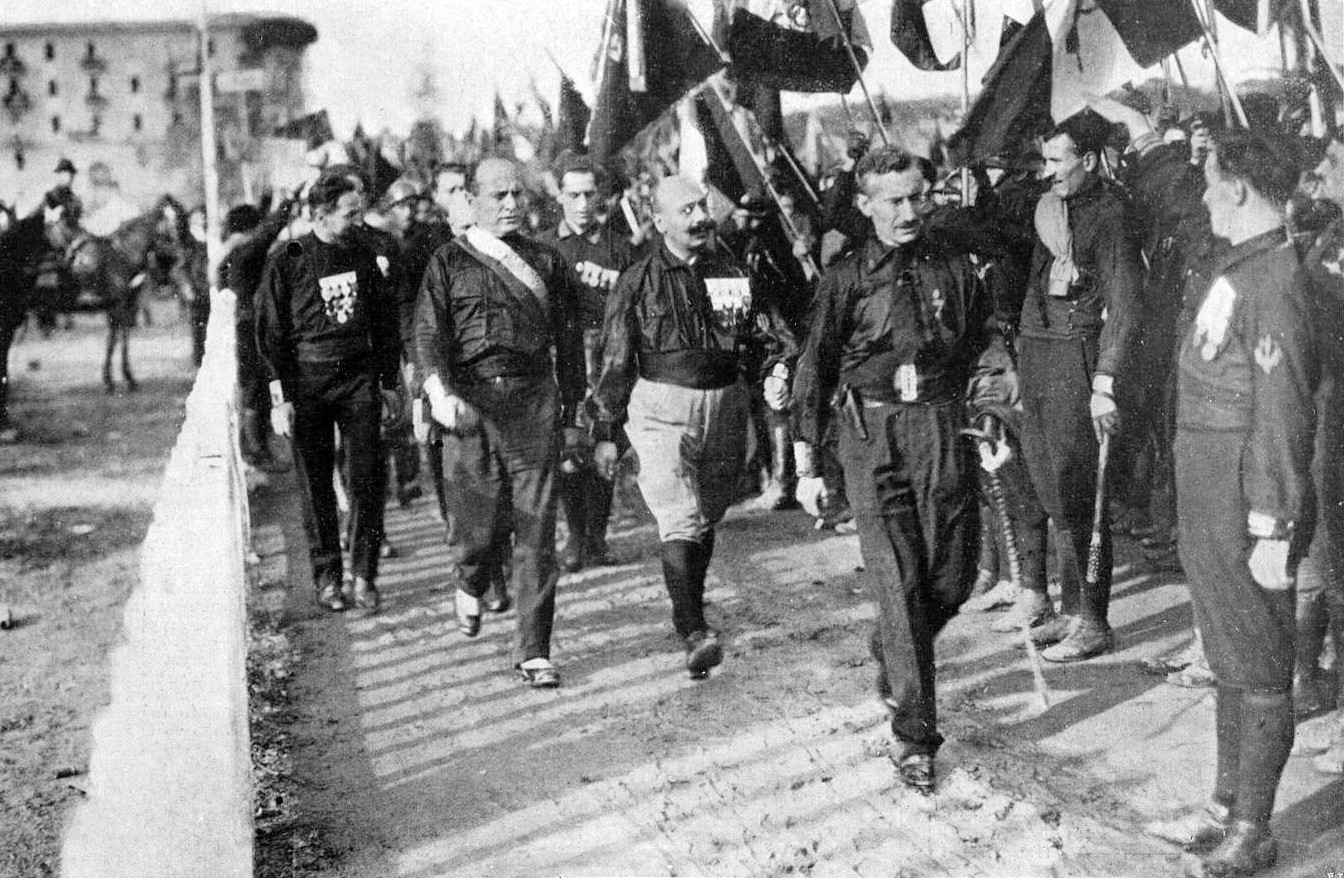
Benito Mussolini (second from left, with sash) marches with other black-shirted fascist leaders at a fascist rally in October 1922.
21. Authoritarianism on the March
As Europeans tried to repair the devastation wrought by World War I, fascism found a foothold. In Italy, Benito Mussolini—having engineered his appointment as prime minister in the final months of 1922 by threatening to march on Rome with his black-shirted supporters—was consolidating power and setting imperialist plans in motion.
22. Hilter’s Attempted Coup
In Germany, the economy was collapsing under hyperinflation after France invaded the industrial Ruhr region in lieu of reparations Germany could not pay. Adolf Hitler and the nascent Nazi Party attracted attention with strident calls to repeal the punishing terms of peace. In November, as prices soared to 4 billion German marks to the dollar, Hitler attempted to seize power for the first time, leading Nazi supporters in Munich in an unsuccessful coup that would come to be known as the Beer Hall Putsch.
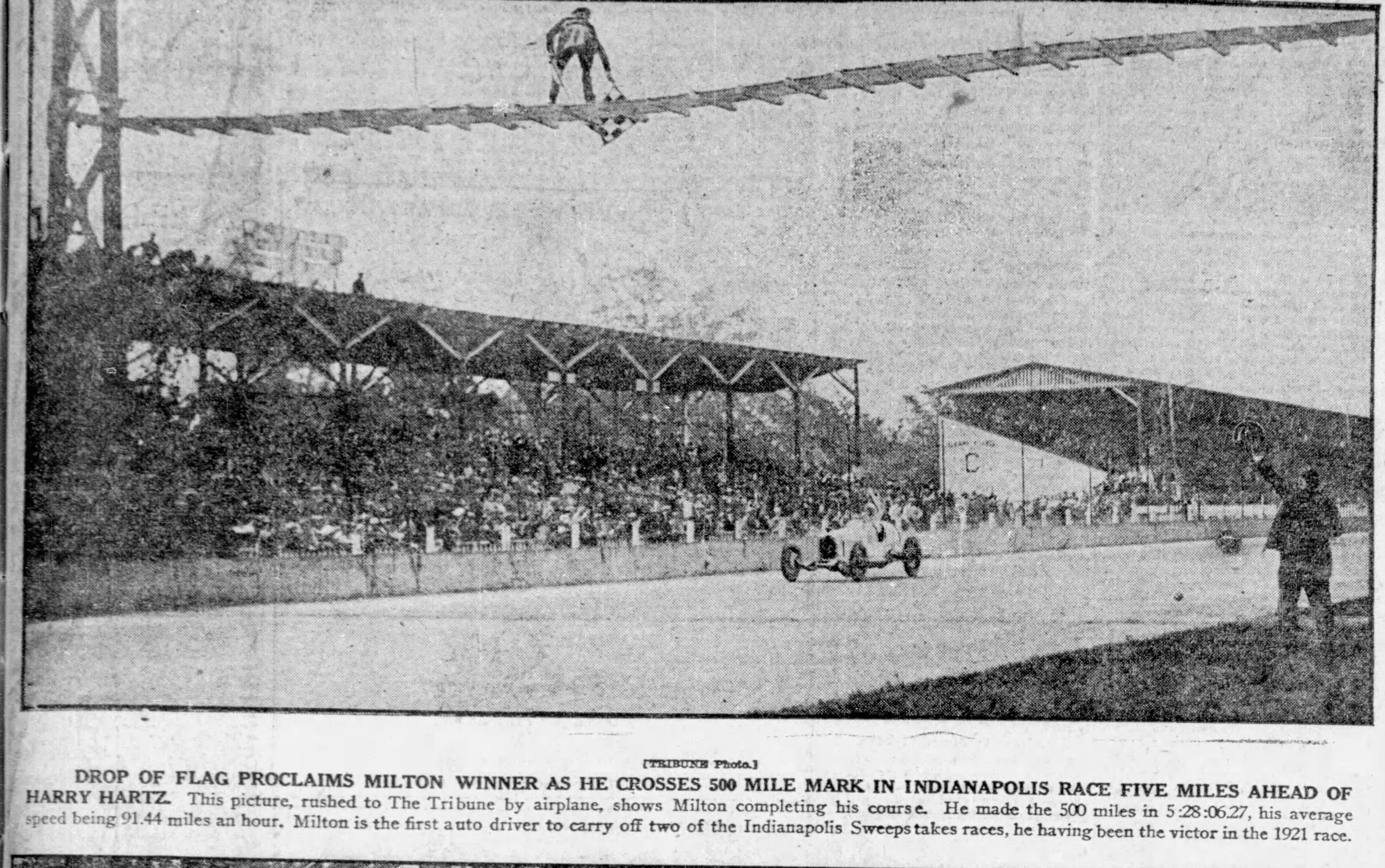
Tommy Milton in the #1 H.C.S. Special (Miller/Miller) at the Indianapolis Motor Speedway, May 30, 1923.
23. The Need for Speed
Speed records fell on land and air throughout 1923 as mechanically inclined daredevils pushed automobiles and airplanes to new limits. In May, Tommy Milton hit 110 miles per hour on the Indy 500’s dirt track. In the air, daring pilots broke the world’s aviation speed record four times over the course of the year, topping out when Navy Lieutenant Harold J. Brow flew 259 miles per hour in November. The feat prompted the Greeley Tribune to note with wonder that the new airplanes were “flirting with a five-mile-a-minute velocity" as the world accelerated toward the future.
Correction: December 29, 2023
An earlier version of this article misstated the Greeley Tribune's wonder at the increasing speed of airplanes, which were "flirting with a five-mile-a-minute-velocity," not five miles per hour.

